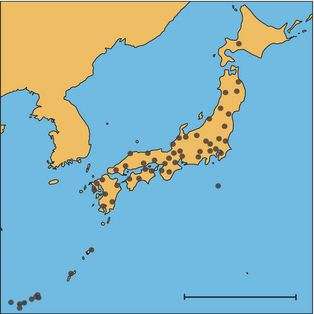Oceans apart: Study reveals insights into the evolution of languages

A new Journal of Evolutionary Biology study provides evidence that physical barriers formed by oceans can influence language diversification.
Investigators argue that the same factor responsible for much of the biodiversity in the Galápagos Islands is also responsible for the linguistic diversity in the Japanese Islands: the natural oceanic barriers that impede interaction between speech communities. Therefore, spatially isolated languages gradually diverge from one another due to a reduction of linguistic contact.
"Charles Darwin would have been amused by a study like this, because it confirms his hypothesis that languages, like species, are the product of evolution," said lead author Dr. Sean Lee.
More information: Lee, S. and Hasegawa, T. (2014), Oceanic barriers promote language diversification in the Japanese Islands. Journal of Evolutionary Biology, 27: 1905. DOI: 10.1111/jeb.12442
Journal information: Journal of Evolutionary Biology
Provided by Wiley

















